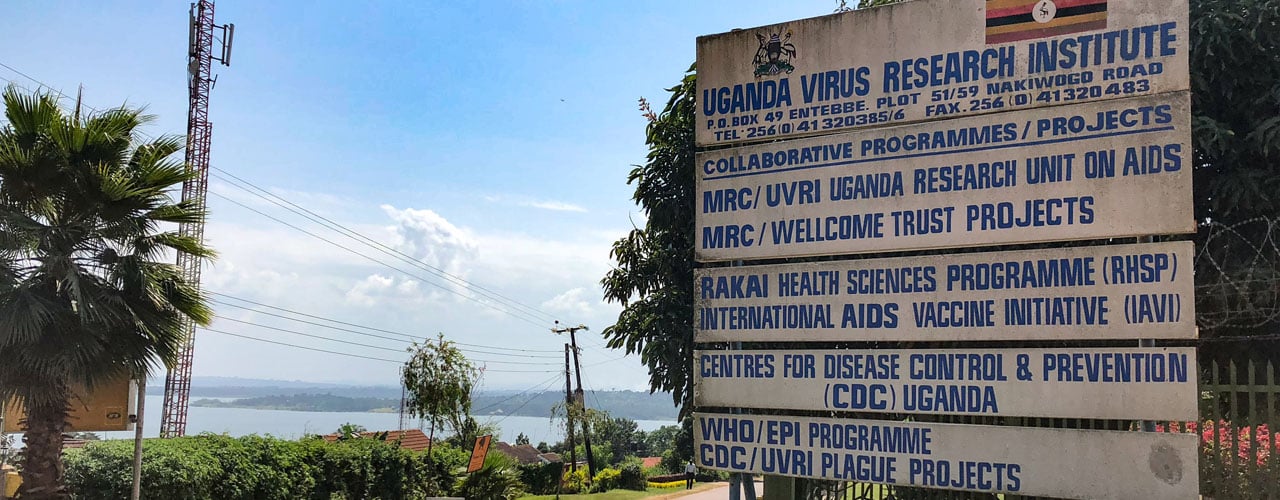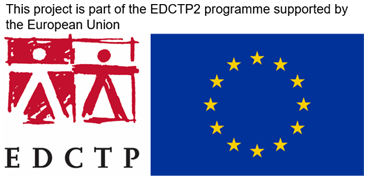This project (grant code: TMA2020CDF-3158) is part of the EDCTP2 programme supported by the European Union. The parent study (CHI-S-Ug) is funded by Wellcome Trust (218454/Z/19/Z)
- To investigate antibody responses to whole recombinant proteins and peptide epitopes of surface-exposed and secreted proteins of S. mansoni before CHI-S and relate this to whether volunteers get infected or not following exposure to CHI-S
- To explore specific anti-glycan antibody responses before CHI-S and relate this to whether they get infected or not following exposure to CHI-S
This study will provide novel insights into epitope-specific antibody kinetics during CHI-S and profiles associated with resistance or susceptibility to CHI-S. This will be a foundation for further study of protective epitope-specific responses in vaccine studies.
There is no vaccine against schistosomiasis – a disease that affected a quarter of the Ugandan population in 2019. Novel approaches to develop one remain a priority. A controlled human infection with S. mansoni (CHI-S) is a pioneering approach to accelerate the development of interventions against schistosomiasis. CHI-S Infection with male-only cercariae ensures that eggs are not laid into tissues preventing the major pathologies associated with schistosomiasis. CHI-S has safely been conducted among S. mansoni naïve Dutch volunteers. However, establishing a CHI-S in an endemic setting such as Uganda offers a unique opportunity to assess correlates of protection and to bridge the gap in the current understanding of immune responses in humans. The global antibody targets in the CHI-S setting among endemic populations are entirely uncharacterized.
Our hypothesis is that CHI-S will result in strong epitope-specific antibody responses in previously infected volunteers and the antibodies from individuals who mount protective immune responses to CHI-S (i.e., lower circulating anodic antigen (CAA) levels) will recognize distinct antigens (and epitopes within a given protein) compared to non-protected individuals.
Overall aim is to identify candidate molecules (proteins and peptide or glycans) associated with protection against controlled human infection with Schistosoma mansoni in an endemic population.
SmCHI Epitope team
Principal investigator
Dr Moses Egesa, Research Fellow, MRC/UVRI & LSHTM Uganda Research
Mentors
Professor Alison Elliott, MRC/UVRI & LSHTM Uganda Research
Professor Moffatt Nyirenda, MRC/UVRI & LSHTM Uganda Research
Collaborators
University of York, UK
- Dr. James Hewitson
- Prof. Alan Wilson
- Dr. Cecile Crosnier
Leiden University Medical Centre, The Netherlands
- Prof. Cornelis Hokke
- Dr. Angela van Diepen
Experimental approach
Study design
A longitudinal study design will be used. SmCHI Epitope is nested within the CHI-S-Ug study that is a dose-escalation controlled human S. mansoni infection study and a vaccine trial with a promising schistosomiasis vaccine candidate.
For the SmCHI Epitope, CHI-S-Ug volunteers will be grouped as “putatively resistant” or “susceptible” to CHI-S depending on the levels of CAA. In the majority of schistosomiasis- naive CHI-S volunteers, the infection was detectable six weeks after challenge using the CAA test. To relate antibody responses with protection against controlled human infection, the volunteers will be stratified by the dose of S. mansoni cercariae given.
Laboratory methods
Characterize antibody responses to recombinant proteins and peptide epitopes of surface-exposed and secreted proteins of S. mansoni before CHI-S and relate this to whether volunteers get infected or not following exposure to CHI-S. Human serum will be screened sequentially using two complementary screens to examine the reactivity of CHI-S volunteer sera. First, a library of recombinant proteins will be screened for IgG and IgE by ELISA with sera collected before and after the CHI-S. Sera from non-exposed European controls will be included in the ELISA runs. The main focus will be on tegumental and secretory S. mansoni proteins. The proteins will be expressed using a mammalian expression system and will be performed with support from Dr Cecile Crosnier at the University of York. ELISA antibody responses will be compared between volunteers who are putatively resistant (N=15) and susceptible (N=15) to CHI-S.
Secondly, a custom-made peptide array will be used to screen for epitopes in the ten most reactive proteins by ELISA mentioned above. IgG and IgE antibody responses will be compared, using this array, at three time-points: before infection, during infection (and before treatment) and after treatment. Peptide array protocols in use with sera of animal models of schistosomiasis at the University of York will be adapted for use with sera of humans infected with S. mansoni under the supervision of Dr. James Hewitson and Prof. Alan Wilson.
Investigate the specific anti-glycan antibody responses before CHI-S and relate this to whether volunteers get infected or not following exposure to CHI-S. A glycan microarray will be used to screen sera before and after the CHI-S in 30 individuals. Anti-glycan IgG and IgM responses at Week 6 will be compared between volunteers who are putatively resistant (N=15) and susceptible (N=15) to CHI-S. Microarrays containing natural glycans isolated from different life stages of Schistosoma glycans/glycoconjugates will be generated and IgG and IgM antibodies measured. Antibody responses will also be compared before and after treatment. Anti-glycan antibody levels in endemic CHI-S volunteers will be compared with related findings from Dutch volunteers. This work will be carried out in collaboration with Prof. Cornelis Hokke and Dr. Angela van Diepen of the Glycobiology Group at the Department of Parasitology, Leiden University Medical Center (LUMC)


